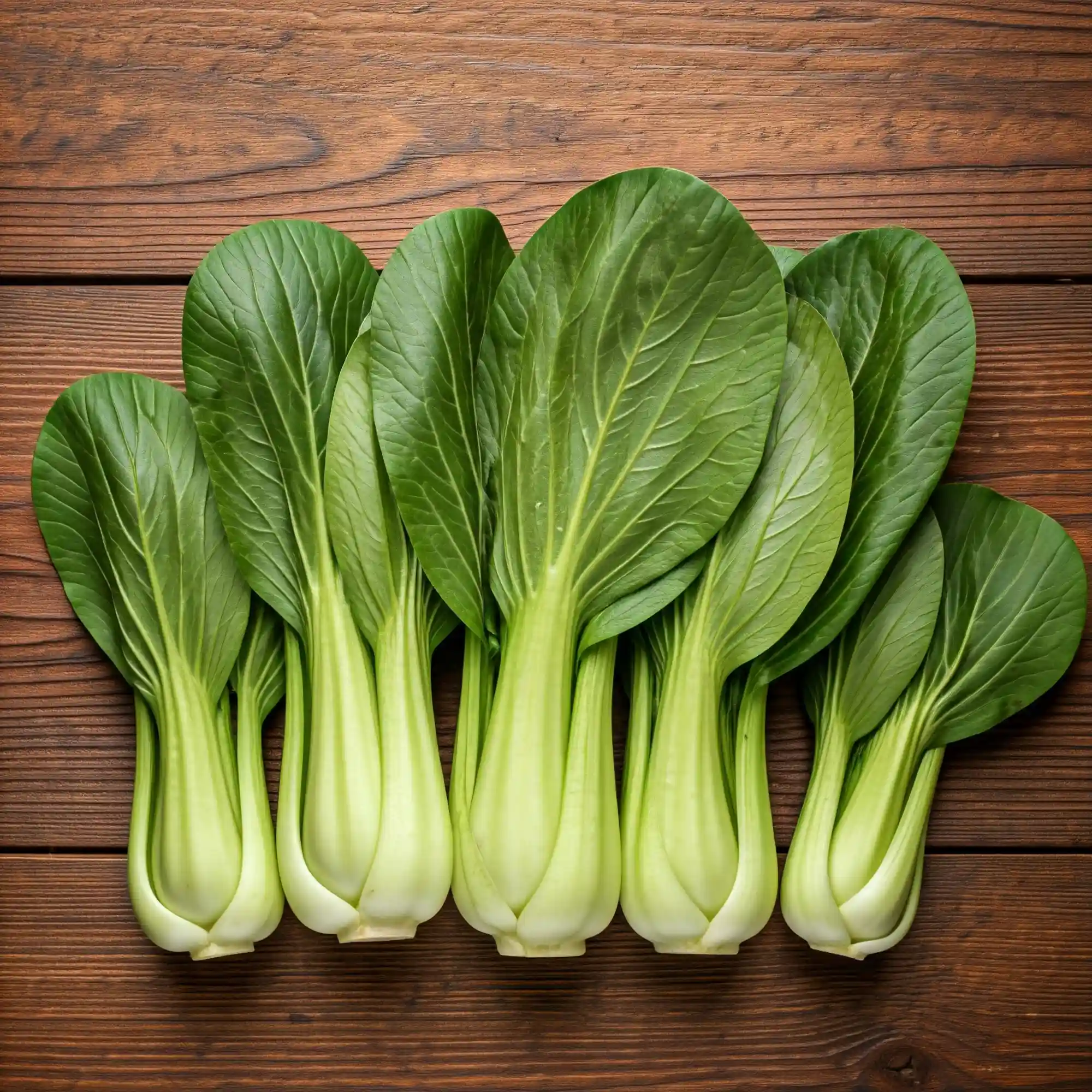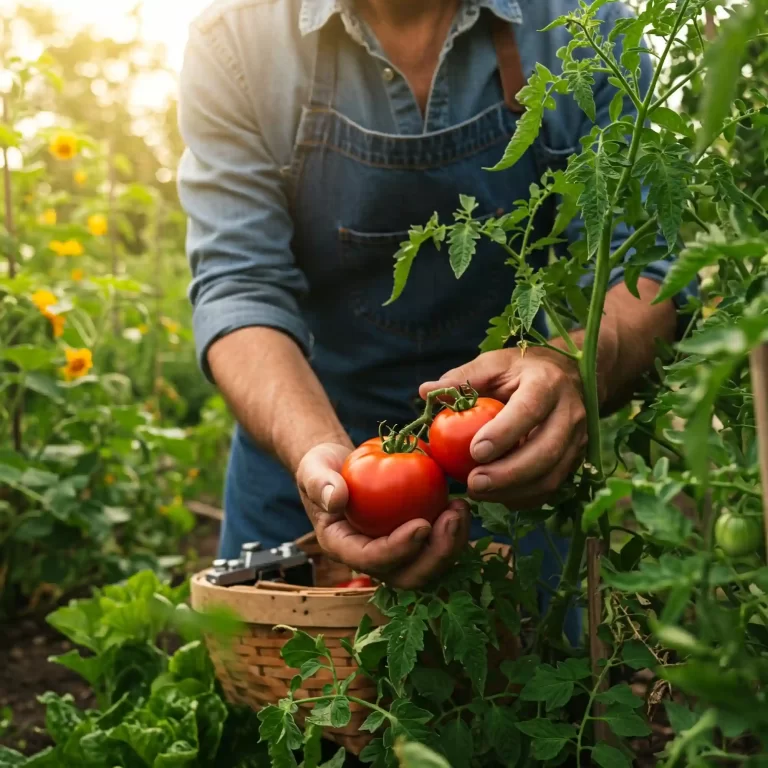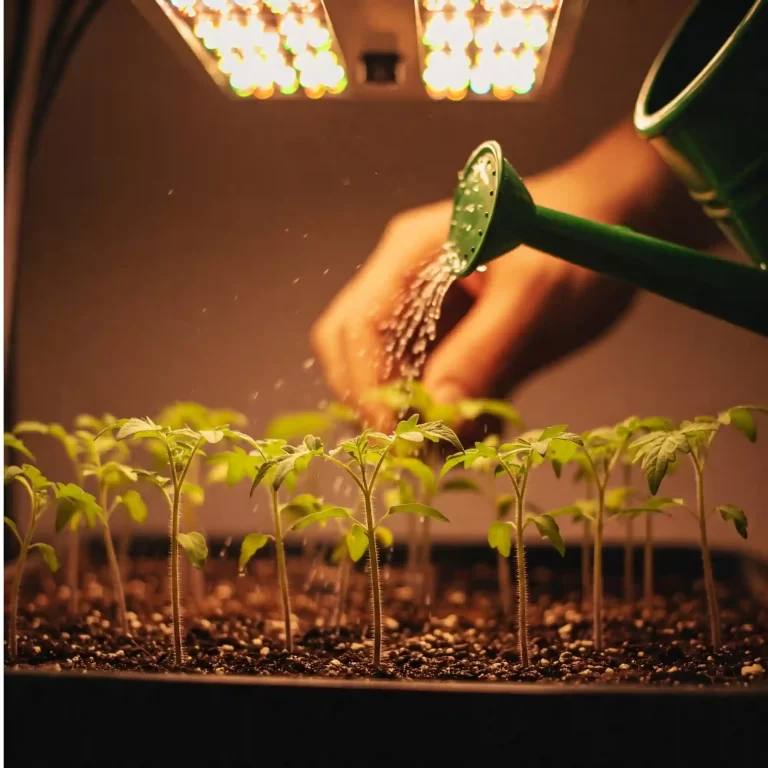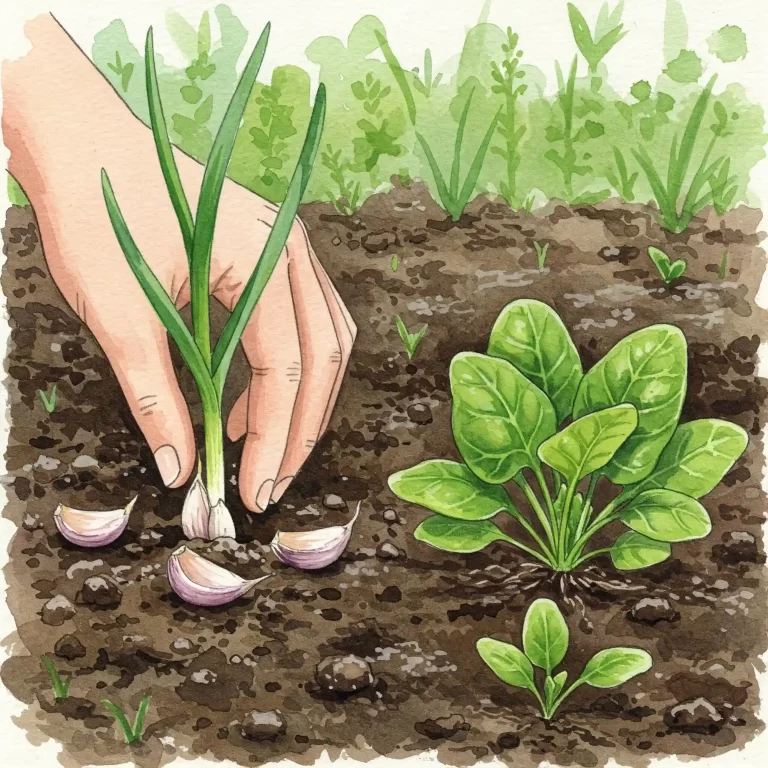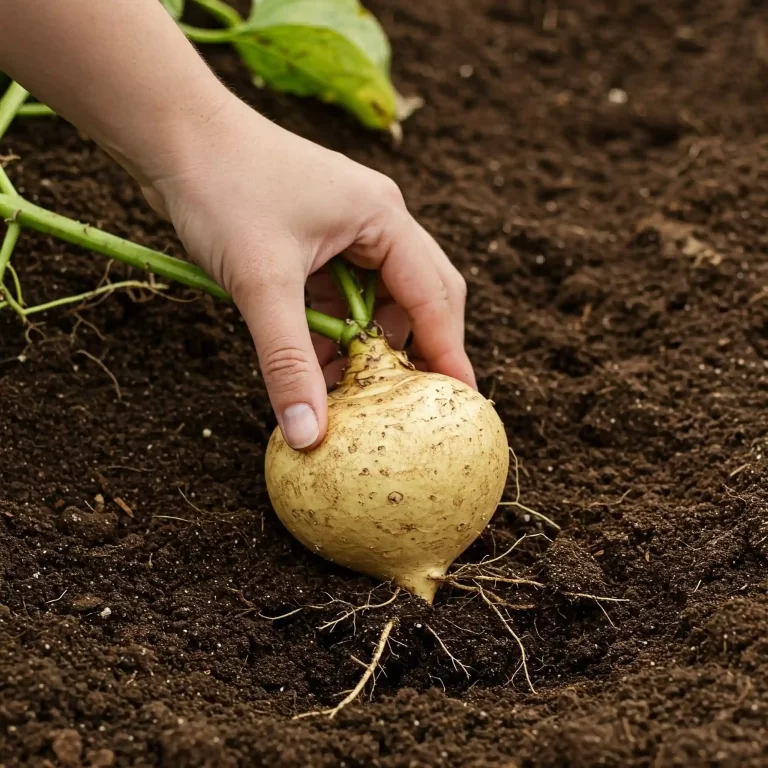Have you ever walked through a grocery store, glanced at the wilted, overpriced bok choy, and thought, “I could do better”? I know I have. It’s frustrating to pay a premium for produce that’s already past its prime. You crave fresh, crisp greens for your stir-fries or salads, but the store-bought options just don’t cut it. The solution? Growing your own bok choy! Learning how to grow bok choy vegetable is easier than you might think, and with a few simple steps, you can enjoy fresh, crisp bok choy straight from your garden, adding vibrant flavor and nutrition to your meals. I’ve been growing bok choy in my own garden for years, and I’m excited to share my knowledge with you.
Understanding Bok Choy: A Quick Overview
Let’s start with the basics. Bok choy, also known as Pak Choi, Chinese cabbage, or white cabbage, is a member of the Brassica family, making it a close relative of cabbage, broccoli, and kale. Its scientific name is Brassica rapa chinensis. This leafy green vegetable, originating from China, has become a popular addition to various cuisines worldwide due to its mild, slightly sweet flavor and crisp texture. I find it incredibly versatile; you can stir-fry it, steam it, add it to soups, or even enjoy it raw in salads.
There’s a fascinating variety within the world of bok choy. You’ll often find two main types in grocery stores and seed catalogs:
- Traditional Bok Choy: This type has dark green leaves and thick, white stalks. It grows to a relatively large size, making it a substantial addition to any meal.
- Baby Bok Choy: As the name suggests, this is a smaller version of the traditional variety. It has smaller, more tender leaves and thinner stalks. I find it perfect for quick stir-fries or grilling.
Beyond these two common types, you might also encounter other varieties, such as Shanghai bok choy, which has pale green leaves and spoon-shaped stalks. Each variety offers slightly different textures and flavors, so experimenting is part of the fun.
From a nutritional standpoint, bok choy is a powerhouse. It’s packed with vitamins, minerals, and antioxidants, making it a healthy addition to your diet. Here’s a quick snapshot of its nutritional profile:
- Vitamin C: A powerful antioxidant that supports immune function.
- Vitamin K: Important for blood clotting and bone health.
- Vitamin A: Essential for vision, immune function, and cell growth.
- Folate: Important for cell growth and development.
- Calcium: Crucial for strong bones and teeth.
- Potassium: Helps regulate blood pressure and muscle function.
I believe that understanding the nutritional benefits of the food we grow adds another layer of appreciation to the gardening process. Knowing that you’re cultivating something that’s not only delicious but also good for you makes the effort even more rewarding.
Here’s a table summarizing the key differences between the two main types of Bok Choy:
| Feature | Traditional Bok Choy | Baby Bok Choy |
| Leaf Color | Dark green | Light to medium green |
| Stalk Color | Thick, white | Thin, pale green to white |
| Size | Large | Small |
| Texture | Crisp stalks, slightly chewy leaves | Tender leaves and stalks |
| Best Uses | Stir-fries, steaming, soups | Quick stir-fries, grilling, salads |
| Maturity Time | Longer | Shorter |
Understanding these characteristics will help you choose the right variety for your garden and culinary needs. Now that you have a basic understanding of what bok choy is, let’s dive into the practical steps of growing it. I’m confident that with the information I’m about to share, you’ll be harvesting your own delicious bok choy in no time.
How to Plant Bok Choy: Starting from Seed or Transplant
Now that we’ve covered the basics of bok choy, let’s get our hands dirty and talk about planting. You have two main options when it comes to starting your bok choy crop: starting from seed or using transplants. Both methods have their advantages, and I’ll walk you through each one.
Starting Bok Choy from Seed
Starting from seed gives you more control over the growing process and allows you to choose from a wider variety of bok choy. Here are some tips for starting bok choy from seed:
- Start seeds indoors 4-6 weeks before the last frost in your area. This will give your seedlings a head start on the growing season.
- Use a seed-starting mix that is light and well-draining. This will help prevent damping-off, a fungal disease that can kill seedlings.
- Sow seeds 1/4 inch deep and 1 inch apart. Once the seedlings emerge, thin them to 3-4 inches apart.
- Keep the soil moist but not soggy. Waterlogged soil can lead to root rot.
- Provide seedlings with plenty of light. A sunny windowsill or grow light will work well.
Transplanting Bok Choy Seedlings
If you don’t have the time or space to start your own seeds, you can purchase bok choy seedlings from a local nursery. Here are some tips for transplanting bok choy seedlings:
- Harden off seedlings before transplanting them into the garden. This will help them acclimate to the outdoor conditions.
- Choose a location that gets at least 6 hours of sunlight per day. Bok choy can tolerate some shade, but it will produce the best yields in full sun.
- Plant seedlings 12-18 inches apart. This will give them plenty of room to grow.
- Water seedlings well after transplanting. This will help them get established in their new home.
Direct Sowing Bok Choy Seeds
You can also direct sow bok choy seeds into the garden once the danger of frost has passed. Here are some tips for direct sowing bok choy seeds:
- Choose a location that gets at least 6 hours of sunlight per day.
- Prepare the soil by loosening it and adding compost or other organic matter.
- Sow seeds 1/4 inch deep and 1 inch apart.
- Thin seedlings to 12-18 inches apart once they emerge.
- Keep the soil moist but not soggy.
No matter which method you choose, you should be able to harvest your first bok choy within 45-60 days of planting.
I hope this information helps you get started growing your own bok choy. With a little care and attention, you’ll be enjoying fresh, delicious bok choy in no time!
How to Grow Bok Choy: Ideal Growing Conditions
Bok choy is a relatively easy vegetable to grow, but it does have some specific needs when it comes to growing conditions. Here are some tips for providing your bok choy plants with the ideal environment to thrive:
Sunlight Requirements
Bok choy prefers full sun, which means it needs at least 6 hours of direct sunlight per day. However, it can also tolerate some partial shade, especially in hot climates. If you live in an area with hot summers, you may want to provide your bok choy plants with some afternoon shade to prevent them from bolting (going to seed prematurely).
Soil Requirements
Bok choy prefers well-draining soil that is rich in organic matter. The soil should also be slightly acidic, with a pH between 6.0 and 7.5. If your soil is heavy clay or sandy, you can amend it with compost or other organic matter to improve drainage and fertility.
Watering Bok Choy
Bok choy needs consistent watering to stay healthy and productive. Water your plants deeply whenever the top inch of soil feels dry to the touch. Avoid overwatering, as this can lead to root rot. It is also important to water your bok choy plants at the base of the plant, rather than overhead, to help prevent fungal diseases.
Temperature and Climate
Bok choy is a cool-season crop that grows best in temperatures between 55 and 75 degrees Fahrenheit. It can tolerate some frost, but it will not survive a hard freeze. If you live in an area with cold winters, you can start your bok choy seeds indoors and transplant them into the garden in the spring.
Additional Tips
Here are some additional tips for growing bok choy in ideal conditions:
- Choose a location with good air circulation. This will help prevent fungal diseases.
- Fertilize your bok choy plants regularly. You can use a balanced fertilizer or a fertilizer that is higher in nitrogen.
- Weed your bok choy plants regularly. Weeds can compete with your bok choy plants for water and nutrients.
- Mulch around your bok choy plants. This will help keep the soil moist and cool, and it will also help to suppress weeds.
With a little care and attention, you can provide your bok choy plants with the ideal growing conditions and enjoy a bountiful harvest.
How to Grow Bok Choy: Caring for Your Plants
Once your bok choy is planted and thriving in ideal conditions, it’s time to focus on ongoing care. This involves a few key practices that will ensure a healthy and productive harvest. I’ve found that consistent attention to these details makes a huge difference in the quality and yield of my bok choy.
Fertilizing Bok Choy
Bok choy is a fast-growing plant, so it benefits from regular fertilization. I recommend using a balanced fertilizer, such as a 10-10-10 or 14-14-14 blend. You can also use a fertilizer that is higher in nitrogen, which will promote leafy green growth.
- When to Fertilize: I typically fertilize my bok choy plants every 2-3 weeks during the growing season.
- How to Fertilize: You can apply fertilizer by side-dressing (sprinkling it along the sides of the plants) or by using a liquid fertilizer. Be sure to follow the instructions on the fertilizer label.
Weeding
Weeds can compete with your bok choy plants for water, nutrients, and sunlight. It’s important to weed your bok choy plants regularly to keep them healthy and productive.
- Methods for Weed Control: I find hand-weeding to be the most effective method, especially for small gardens. You can also use a hoe or other gardening tools to remove weeds. Be careful not to damage the roots of your bok choy plants when weeding.
Protecting Bok Choy from Pests and Diseases
Bok choy is susceptible to a few common pests and diseases. Here are some things to watch out for:
- Pests: Aphids, cabbage worms, flea beetles, slugs, and snails are some of the most common pests that can attack bok choy.
- Diseases: Downy mildew and clubroot are two common diseases that can affect bok choy.
Here are some tips for protecting your bok choy plants from pests and diseases:
- Inspect your plants regularly for signs of pests or diseases.
- Remove any pests or diseased leaves by hand.
- Use organic pest control methods, such as insecticidal soap or neem oil.
- Rotate your crops each year to help prevent diseases from building up in the soil.
- Choose disease-resistant varieties of bok choy.
Preventing Bolting
Bolting is when a plant goes to seed prematurely. This can happen when bok choy is exposed to hot weather or stress.
Here are some tips for preventing bolting:
- Plant your bok choy in the spring or fall, when the weather is cool.
- Provide your bok choy plants with some afternoon shade in hot weather.
- Water your bok choy plants regularly to keep them from getting stressed.
- Choose bolt-resistant varieties of bok choy.
By following these tips, you can help your bok choy plants stay healthy and productive throughout the growing season.
How to Harvest Bok Choy: When and How
The time has finally arrived! Your bok choy plants are looking lush and vibrant, and you’re eager to enjoy the fruits (or rather, vegetables) of your labor. Knowing when and how to harvest bok choy is key to enjoying its peak flavor and texture. From my experience, there’s nothing quite like the taste of freshly harvested bok choy, still crisp from the garden.
When to Harvest Bok Choy
The timing of your harvest will depend on the variety of bok choy you’re growing and your personal preference.
- Baby Bok Choy: This variety is typically ready for harvest when it reaches about 6-8 inches tall. You can harvest the entire plant or harvest individual outer leaves as needed. I often harvest baby bok choy when I want a tender addition to a salad or a quick stir-fry.
- Mature Bok Choy: This variety is usually harvested when it reaches about 12-18 inches tall. You can harvest the entire head at once or harvest individual leaves over an extended period. I prefer to harvest the entire head when I’m preparing a larger meal or want to preserve some of the bok choy for later use.
How to Harvest Bok Choy
Harvesting bok choy is a simple process. Here’s how I do it:
- Using a sharp knife or garden shears, cut the bok choy at the base of the plant. Make a clean cut just above the soil line.
- If you’re harvesting individual leaves, start with the outer leaves. Gently pull or cut them away from the plant. Be careful not to damage the inner leaves.
Storing Bok Choy After Harvest
To keep your harvested bok choy fresh and crisp, it’s essential to store it properly. Here are a few tips:
- Don’t wash the bok choy until you’re ready to use it. Washing it beforehand can promote spoilage.
- Store the bok choy in a plastic bag in the refrigerator. You can also wrap it in a damp paper towel before placing it in the bag.
- Bok choy will typically last for up to a week in the refrigerator.
By following these harvesting and storage tips, you can enjoy fresh, delicious bok choy from your garden for an extended period. I find that the flavor of homegrown bok choy is far superior to anything you can find in a store.
Growing Bok Choy in Different Environments
While bok choy thrives in traditional garden beds, I’ve discovered it’s surprisingly adaptable to various growing environments. Whether you have limited space, challenging weather conditions, or prefer indoor gardening, there are ways to successfully cultivate bok choy. Let’s explore some alternative growing methods:
How to Grow Bok Choy in Containers
Container gardening is an excellent option for those with limited space, such as apartment dwellers or those with small yards. I’ve had great success growing bok choy in containers on my balcony. Here are some key considerations:
- Choosing the Right Container: Select a container that is at least 6 inches deep and has drainage holes. This will allow the roots to grow properly and prevent water from accumulating at the bottom.
- Soil Mix: Use a well-draining potting mix that is rich in organic matter. Avoid using garden soil, as it can become compacted in containers.
- Watering: Container-grown bok choy will need to be watered more frequently than bok choy grown in the ground. Check the soil moisture regularly and water when the top inch of soil feels dry.
- Sunlight: Place your container in a location that receives at least 6 hours of sunlight per day.
How to Grow Bok Choy Indoors
Growing bok choy indoors is a great way to extend your growing season or enjoy fresh bok choy year-round. Here are some tips for indoor bok choy cultivation:
- Light Requirements: Bok choy needs plenty of light to grow indoors. Place your plants near a sunny window or use grow lights to supplement natural light.
- Temperature: Maintain a consistent temperature between 60 and 75 degrees Fahrenheit.
- Humidity: Bok choy prefers moderate humidity. You can increase humidity by placing a tray of water near your plants or using a humidifier.
How to Grow Bok Choy in Hot Weather
Bok choy is a cool-season crop, but I’ve learned that it can be grown successfully in hot weather with a few adjustments:
- Shade Cloth: Provide shade during the hottest part of the day to prevent bolting.
- Watering Strategies: Water more frequently to keep the soil cool and moist.
- Bolt-Resistant Varieties: Choose varieties that are known to be more resistant to bolting.
How to Grow Bok Choy in Partial Shade During Summer Months
If you live in an area with hot summers, growing bok choy in partial shade can help prevent bolting and extend your harvest. Here are some tips:
- Choosing Appropriate Varieties: Select varieties that are known to tolerate partial shade.
- Adjusting Watering Schedule: Water more frequently, as the soil may dry out more quickly in partial shade.
By adapting your growing methods to suit your specific environment, you can enjoy fresh, homegrown bok choy no matter where you live.
Troubleshooting Common Bok Choy Problems
Even with the best care, you might encounter some challenges while growing bok choy. I’ve certainly had my fair share of garden mishaps, and it’s all part of the learning process. Here are some common problems you might face and how to address them:
Why is my bok choy bolting?
Bolting, or premature flowering, is a common issue with bok choy, especially in hot weather. Several factors can contribute to bolting:
- High Temperatures: Bok choy prefers cool weather, and prolonged exposure to high temperatures can trigger bolting.
- Stress: Stressful conditions, such as drought, nutrient deficiencies, or transplant shock, can also cause bolting.
- Variety: Some varieties of bok choy are more prone to bolting than others.
Here are some tips to prevent bolting:
- Plant at the right time: Plant bok choy in the spring or fall, when the weather is cool.
- Provide shade: If you live in a hot climate, provide shade during the hottest part of the day.
- Water regularly: Keep the soil consistently moist to prevent drought stress.
- Choose bolt-resistant varieties: Select varieties that are known to be more resistant to bolting.
Why are my bok choy leaves turning yellow?
Yellowing leaves can be a sign of several problems:
- Nutrient Deficiency: A lack of essential nutrients, such as nitrogen or magnesium, can cause yellowing leaves.
- Overwatering: Overwatering can lead to root rot, which can also cause yellowing leaves.
- Pests or Diseases: Some pests and diseases can cause yellowing leaves.
Here are some steps to take if your bok choy leaves are turning yellow:
- Check the soil moisture: Make sure the soil is not waterlogged.
- Fertilize your plants: Apply a balanced fertilizer to provide essential nutrients.
- Inspect for pests or diseases: Look for signs of pests or diseases and take appropriate action.
What are these holes in my bok choy leaves?
Holes in bok choy leaves are often caused by pests, such as flea beetles or cabbage worms.
Here are some ways to deal with pests:
- Handpicking: Remove pests by hand and dispose of them.
- Insecticidal soap: Apply insecticidal soap to control pests.
- Row covers: Use row covers to prevent pests from reaching your plants.
How to deal with aphids on bok choy?
Aphids are small, soft-bodied insects that can suck the sap from bok choy leaves.
Here are some ways to control aphids:
- Hose them off: Use a strong stream of water to dislodge aphids from the leaves.
- Insecticidal soap: Apply insecticidal soap to control aphids.
- Natural predators: Encourage natural predators, such as ladybugs and lacewings, to your garden.
By addressing these common problems promptly, you can keep your bok choy plants healthy and productive.
FAQ:
This section is dedicated to answering some of the more specific questions I frequently get about growing bok choy.
How to grow bok choy vegetable in raised garden beds?
Growing bok choy in raised beds offers several advantages. The improved drainage prevents root rot, and the raised structure warms up the soil earlier in the spring, allowing for an extended growing season. When planting in raised beds, I recommend amending the soil with plenty of compost to improve fertility and water retention. Ensure the bed is in a location that receives at least 6 hours of sunlight. Plant your bok choy seedlings or direct sow seeds according to the spacing guidelines mentioned earlier.
How to grow bok choy vegetable from seed indoors for transplanting?
Starting seeds indoors is a great way to get a head start on the growing season, especially in colder climates. I usually start my bok choy seeds about 4-6 weeks before the last expected frost. Use a seed-starting mix and sow the seeds about ¼ inch deep. Keep the soil moist and provide plenty of light, either from a sunny windowsill or grow lights. Once the seedlings have developed a few sets of true leaves, you can begin hardening them off by gradually exposing them to outdoor conditions before transplanting them into the garden.
How to grow bok choy vegetable in containers on a balcony?
Growing bok choy in containers is perfect for urban gardeners or those with limited space. Choose a container that is at least 6 inches deep and has drainage holes. Use a high-quality potting mix and ensure the container receives at least 6 hours of sunlight per day. Water regularly, as containers tend to dry out more quickly than garden beds. I’ve found that fertilizing with a liquid fertilizer every few weeks can help keep container-grown bok choy thriving.
How to grow bok choy vegetable in hot weather without bolting?
Bolting, or premature flowering, is a common problem with bok choy in hot weather. To prevent bolting, I recommend planting bolt-resistant varieties. Providing shade during the hottest part of the day can also help. Consistent watering is crucial to prevent stress, which can trigger bolting. Mulching around the plants can help keep the soil cool and moist.
How to grow bok choy vegetable organically with natural pest control?
Growing bok choy organically involves using natural methods to fertilize and control pests. I use compost and other organic amendments to improve soil fertility. For pest control, I rely on methods like handpicking pests, using insecticidal soap or neem oil, and encouraging beneficial insects like ladybugs. Crop rotation can also help prevent soilborne diseases.
How to grow baby bok choy vegetable for quick and easy harvest?
Baby bok choy is a fast-growing variety that can be harvested in just a few weeks. Follow the same planting and care instructions as for mature bok choy, but you can space the plants closer together. I typically harvest baby bok choy when it reaches about 6-8 inches tall.
How to grow bok choy vegetable successfully in zone 7 with minimal effort?
Zone 7 offers a relatively long growing season for bok choy. I recommend planting in early spring or late summer for a fall harvest. Choose varieties that are well-suited to your local climate. Consistent watering and adequate sunlight are key for success. Mulching can help retain moisture and suppress weeds, reducing the need for frequent maintenance.
How to grow bok choy vegetable and prevent common pests and diseases naturally?
Preventing pests and diseases naturally involves several strategies. Crop rotation, good air circulation, and proper watering practices can help prevent diseases. For pest control, I recommend using natural methods like handpicking, insecticidal soap, and neem oil. Encouraging beneficial insects can also help keep pest populations in check.
How to grow bok choy vegetable from seed to harvest in a small garden?
Even in a small garden, you can successfully grow bok choy. I recommend using intensive planting methods, such as square foot gardening, to maximize space. You can also grow bok choy in containers if you have limited garden space. Choose compact varieties and ensure they receive adequate sunlight and water.
This expanded FAQ section addresses many of the specific questions gardeners might have, providing practical advice and solutions for various growing situations.
Conclusion
Growing bok choy is a rewarding experience that can provide you with fresh, nutritious greens right from your own backyard. Whether you have a sprawling garden or just a small balcony, there’s a way to successfully cultivate this versatile vegetable. By following the tips and techniques I’ve shared, you can avoid common pitfalls and enjoy a bountiful harvest.
From selecting the right variety to providing the ideal growing conditions and protecting your plants from pests and diseases, I’ve covered the essential aspects of bok choy cultivation. Remember, gardening is a journey of learning and experimentation. Don’t be discouraged by occasional setbacks. Embrace the process, learn from your experiences, and enjoy the satisfaction of nurturing your own food.
So, grab your gardening gloves, get your hands dirty, and embark on your bok choy growing adventure. I’m confident that with a little care and attention, you’ll be enjoying delicious, homegrown bok choy in no time.
